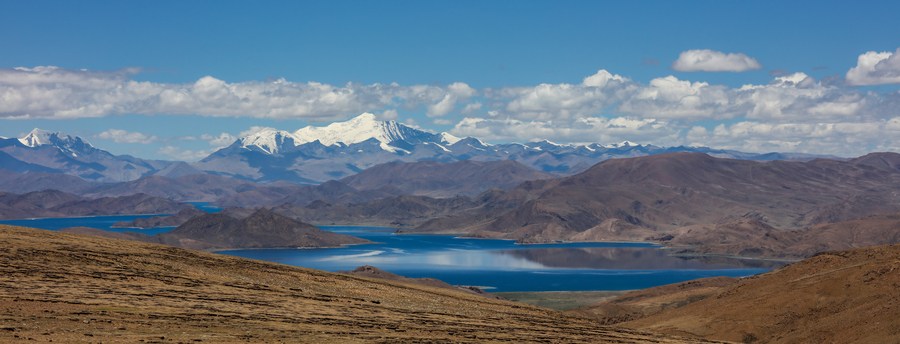
Located on the Qinghai-Tibet Plateau, known as the "roof of the world," southwest China's Tibet Autonomous Region has experienced a decade of extraordinary transformations with the support of the central government and the entire country.
After years of efforts, rural residents in Tibet have achieved fruitful results and seen improved livelihood, with their per capita disposable income maintaining double-digit growth for 19 consecutive years.

In 2021, the per capita disposable income of rural residents in Tibet reached 16,935 yuan (about 2,385 U.S. dollars), 2.97 times the income recorded in 2012, said Du Jie, director of the regional department of agriculture and rural affairs. The income growth has been the highest nationwide for seven consecutive years.
"The living environment and quality of life of farmers and herders have significantly improved over the past 10 years," Du said.
NEW ROADS
With heavy spending on the construction of railway and road facilities, Tibet has fostered rapid development and constant improvements to the lives of the locals.
Since 2012, more than 337 billion yuan has been spent as fixed-asset investment in Tibet's transport sector, according to the region's transport department.
Over the past decade, three railway lines have formed a "Y" shape on the plateau region, with the latest Lhasa-Nyingchi line, the region's first electrified railway line, kicking off operation on June 25, 2021. The Lhasa railway station, where the three lines meet, has seen passenger flow up from 2.24 million in 2007 to more than 4 million in 2021.

In Cosibsumgyi Township, Ngari Prefecture, residents of Baka Village have enjoyed development dividends in local infrastructure.
"In the 1990s, local residents started to plant willow trees along the river valley. Considering the weather in Ngari Prefecture, plantations are usually carried out in April and May, when Cosibsumgyi is often snowbound," said Oizhu Doje, who hails from Baka Village.
Oizhu Doje recounted a time when the mountain was completely blocked for a month due to heavy snowfall, preventing the transportation of nursery stock to the outside.
At the end of 2020, an asphalt road was operational in the township. "The road, coupled with a series of favorable policies, has guaranteed smooth shipment for nursery stock," Oizhu Doje said.
The total length of roads in Tibet has increased by some 55,000 km to 120,000 km over the past 10 years, including more than 90,000 km of rural roads, according to official figures.